Maps Graphic

What are the benefits of using mind maps in education ?
Mind maps are a valuable tool in education, offering benefits such as enhanced learning and retention, promotion of creative thinking, improved organizational skills, facilitated collaboration, and encouragement of active learning. They cater to visual learners, aid in brainstorming and idea generation, help with information hierarchy and time management, are useful for group work and communication, and increase student engagement and self-assessment. Incorporating mind maps into teaching strategies can create a more effective and engaging learning environment.

How do mind maps aid in studying and retaining information ?
Mind maps are a visual tool that aids in studying and retaining information by improving organization, enhancing creativity, promoting active learning, and facilitating recall. They provide a logical structure for organizing thoughts and connecting ideas, making complex information more accessible. Mind maps also encourage brainstorming and experimentation, leading to better learning outcomes. Additionally, they promote deeper learning through active participation and reflection on understanding. Finally, mind maps facilitate recall by providing visual cues and breaking down information into manageable chunks. Incorporating mind maps into your study routine can boost academic performance and achieve better results in your studies.

What are the best software tools for creating mind maps ?
Best Software Tools for Creating Mind Maps Mind maps are an excellent way to visually organize information, ideas, and thoughts. They help in brainstorming, planning, and problem-solving. There are several software tools available that make it easy to create mind maps. Here are some of the best ones: 1. XMind is a powerful mind mapping tool that offers a range of features to create professional-looking mind maps. It has a user-friendly interface and supports various chart types, including tree, logic, and matrix. XMind also allows you to import and export data in different formats, making it easy to share your work with others. 2. MindMeister is an online mind mapping tool that lets you create mind maps directly in your browser. It offers real-time collaboration, allowing multiple users to work on the same mind map simultaneously. MindMeister also integrates with popular apps like Google Drive and Dropbox, making it easy to save and share your work. 3. Coggle is another online mind mapping tool that offers a simple and intuitive interface. It allows you to create beautiful mind maps with images, links, and notes. Coggle also supports collaboration, letting you invite team members to work on the same mind map together. 4. FreeMind is a free, open-source mind mapping tool that offers basic functionality for creating mind maps. It has a clean and straightforward interface, making it easy to get started with mind mapping. FreeMind also allows you to export your mind maps in various formats, including HTML and PDF. 5. iMindMap is a comprehensive mind mapping tool that offers a wide range of features for creating visually stunning mind maps. It has a unique "radial" view that makes it easy to focus on specific areas of your mind map. iMindMap also supports multimedia elements, such as images and audio files, making it an excellent tool for creative projects.
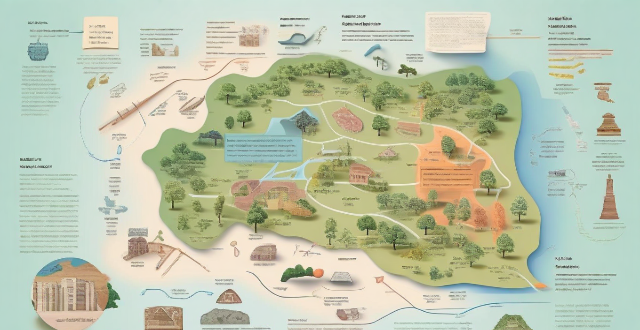
How can mind maps be used to enhance note-taking and organization ?
Mind maps are an effective tool for organizing information, enhancing memory recall, and improving note-taking. They offer a visual representation of complex ideas, making it easier to understand and remember them. Mind maps can be used in various ways, such as organizing information, enhancing memory recall, and improving note-taking. They utilize visual associations, hierarchical structures, and flexibility to aid in understanding, remembering, and applying complex information in different contexts. Examples of using mind maps include studying, project planning, brainstorming, and taking meeting notes.
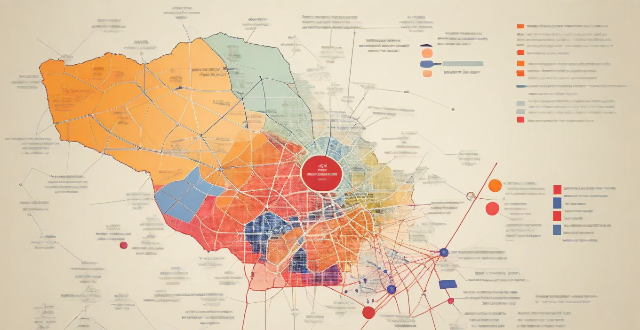
How can mind maps help in revising large amounts of information ?
Mind maps are a useful tool for organizing and revising large amounts of information. By visualizing complex information, identifying key themes and relationships, organizing thoughts, improving memory retention, and facilitating creative thinking, mind maps can help learners better understand and retain information. To use mind maps effectively, choose a central idea or theme, create branches for subtopics, add details and examples, connect related ideas, review and refine the map, and use it as a study tool.

What are some creative ways to display data in an infographic ?
The text describes various creative ways to display data in an infographic, including: 1. **Use Colors and Shapes**: Colors and shapes can be used to create contrast and highlight important information. Different colors and shapes like circles, squares, or triangles can represent different categories or values of data. 2. **Incorporate Charts and Graphs**: Bar charts, line graphs, pie charts, heatmaps, or treemaps are great for displaying numerical data in an infographic. They help in comparing sales figures, showing trends over time, or illustrating proportions. 3. **Tell a Story with a Timeline**: A timeline helps viewers understand how events unfolded over time, especially useful for historical data or processes that have multiple steps. 4. **Use Icons and Symbols**: Icons and symbols convey information quickly without words and add visual interest to the infographic. Examples include checkmark icons, warning signs, or arrow icons. 5. **Include Maps and Geographic Data**: If the data has a geographic component, incorporating maps can be very effective. This could be world maps, regional maps, or even custom maps for specific locations. 6. **Add Interactive Elements**: Interactive elements such as clickable sections that reveal more details or animations that bring the data to life can make the infographic more engaging. 7. **Use Text Sparingly but Effectively**: Well-placed text provides context and explanation where needed. Clear typography and avoiding clutter with too much text is crucial. By using these methods, one can create an infographic that presents data clearly while also captivating and informing the audience.

Where can I find a map of local cycling routes ?
Cycling is an excellent way to explore your local area, stay fit, and enjoy the outdoors. If you're looking for maps of cycling routes near you, here are some resources that can help: City or Local Government Websites Cycling Clubs or Groups Online Cycling Communities Local Bike Shops Tourism Information Centers Smartphone Apps Google Maps Social Media Library or Bookstore Outdoor Recreational Maps Word of Mouth Remember to always check the condition of the route before heading out, as well as the weather forecast and any potential hazards along the way. Happy cycling!
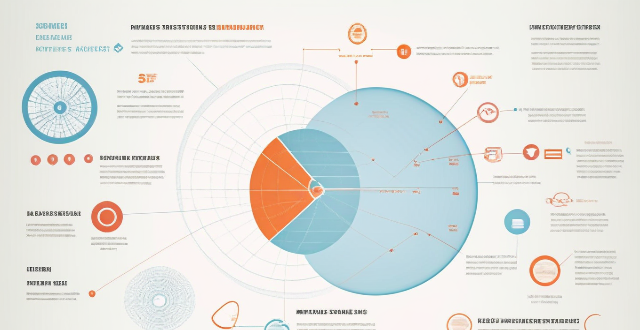
Are there any drawbacks or limitations to using mind maps ?
Mind maps are a popular tool for brainstorming, planning, and organizing information. However, they have limitations and drawbacks such as oversimplification of complex information, limited depth, subjectivity and bias, difficulty in handling large amounts of data, reliance on visual memory, and technological limitations. It's essential to be aware of these drawbacks to use them effectively and choose the right tool for the job at hand.

What are some tips for creating effective mind maps ?
Effective mind maps should start with a central idea, use images and colors, connect ideas with lines, keep it simple, use keywords and phrases, be creative, and review and revise.

Can you suggest some great iPhone apps for travel ?
The text provides a summary of iPhone apps that can be beneficial for travelers. These include TripIt for organizing travel plans, Google Maps for navigation and real-time traffic updates, CityMaps2Go for offline maps and travel guides, XE Currency for currency conversion, Duolingo for language learning, PackPoint for creating customized packing lists, and WhatsApp for secure messaging and staying in touch. These apps can help travelers plan their trips, navigate unfamiliar locations, manage their budgets, learn new languages, pack appropriately, and stay connected with friends and family.

How can I discover new cycling routes in my area ?
Finding new cycling routes can be an exciting adventure. Here are several ways to discover new cycling routes in your area: 1. Use cycling apps and websites like Strava, Komoot, Ride with GPS, and Bikemap. 2. Join local cycling groups through Meetup, cycling clubs, or Facebook groups. 3. Check with local bike shops for route recommendations and group rides. 4. Look at city or county parks departments for maps and events showcasing new routes. 5. Ask friends and family for hidden gem routes and join their rides. 6. Explore on your own by scouting detours on familiar rides and using maps. 7. Attend cycling events like road races and bike festivals to learn about new routes. 8. Use Google Maps to plan custom routes and spot potential paths in satellite view. 9. Check out local guidebooks on cycling in your region at bookstores or the library. 10. Visit local tourist information centers for brochures and advice on scenic routes. By utilizing these methods, you can expand your cycling horizons and enjoy the thrill of discovering new routes in your area while riding safely and respecting the rules of the road and trail.

What types of assistive technology are available for students with special education needs ?
Assistive technology for students with special education needs includes devices and systems to enhance their functional capabilities. Types of AT include alternative communication tools, computer accessibility features, mobility aids, sensory aids, learning aids, environmental controls, orthotic/prosthetic devices, and personal emergency response systems. Selecting the right AT requires evaluation of student needs and collaboration between the student, family, teachers, and service providers to ensure it is user-friendly, effective, and integrated into the educational program.
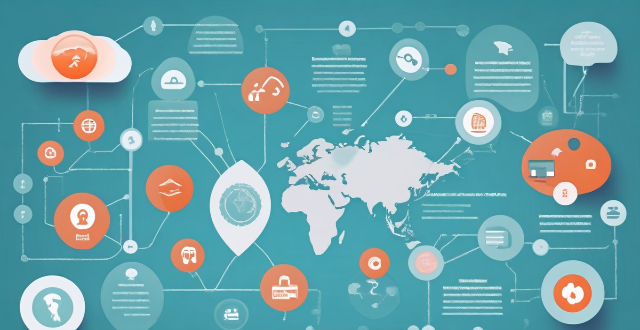
Can mind mapping be effectively used in business settings ?
Mind mapping is a visual tool that can be effectively used in business settings to enhance productivity, creativity, and communication. It helps individuals and teams organize information, generate ideas, and solve problems by creating a structured diagram of related concepts. The benefits of mind mapping in business include improved organization, enhanced creativity, increased productivity, and better communication. To implement mind mapping in business, one should choose the right tool, train their team, integrate it into processes, encourage collaboration, and continuously evaluate its effectiveness.

In what ways can mind mapping help with project management and planning ?
Mind mapping is a valuable tool for project management and planning, offering benefits such as clarifying objectives, enhancing brainstorming sessions, facilitating task breakdown, tracking progress, managing risks, and improving communication. By providing a visual representation of information, mind maps enable clearer understanding and more effective collaboration among team members, ultimately contributing to the success of projects.

What are some popular celebrity makeup techniques ?
Makeup techniques used by celebrities often set trends and become popular among the general population. Here are some of the most popular celebrity makeup techniques: 1. Contouring involves using makeup to create shadows and highlights on the face, which can help define features and enhance facial structure. This technique is often used by celebrities to achieve a more chiseled look. 2. Baking is a makeup setting technique where you apply a thick layer of translucent powder under the eyes and on high points of the face, let it sit for 5-10 minutes, and then brush it off. This technique helps to set the foundation and concealer, making them last longer. 3. Celebrities often opt for glossy lips to add a pop of color and make their lips appear fuller. This trend has been popularized by stars like Kylie Jenner and Rihanna. 4. Full, bold eyebrows have been in style for several years now, thanks to celebrities like Cara Delevingne and Lily Collins who have sported natural-looking, full brows. 5. Achieving a dewy, glowing complexion is another popular celebrity makeup technique. Stars like JLo and Kim Kardashian are known for their radiant skin. 6. Graphic eyeliner is a bold look that involves creating sharp, defined lines on the eyes. Celebrities like Bella Hadid and Kendall Jenner have made this trend popular.

What are the best apps or websites for navigating and planning a backpacking trip in Europe ?
Backpacking through Europe can be an exciting adventure with the right planning and navigation tools. Here are some of the best apps and websites to help you plan your trip and navigate unfamiliar territories: ## Best Apps for Backpacking in Europe - Rome2Rio: Find transportation options between destinations, including flights, trains, buses, and ferries. - Hostelworld: Search for affordable accommodation based on location, price, and ratings. - Google Maps: Navigate cities and towns using detailed maps and public transportation routes. - CityMaps2Go: Access offline maps and guides for over 8000 destinations worldwide. - Omio: Book train tickets across Europe with real-time schedules and ticket prices. ## Best Websites for Backpacking in Europe - Eurail: Offers an extensive network of train routes across Europe with discounted rail passes for backpackers. - Interrail: Provides real-time schedules and ticket prices for trains, buses, and ferries. - Lonely Planet: Comprehensive travel guide website with recommendations for accommodations, restaurants, and attractions. - Airbnb: Find unique and affordable accommodation options while backpacking in Europe. - Couchsurfing: Connects travelers with local hosts who offer free accommodation in their homes.

Are there any apps that help in planning a road trip route with attractions and food stops ?
When planning a road trip, there are several apps available that can assist in route planning, finding attractions, and discovering food stops and restaurants. Google Maps offers turn-by-turn directions, points of interest, and customization options. Roadtrippers helps plan a comprehensive itinerary, suggests interesting places to visit, and offers themed trips. Sygic Travel provides information on top attractions, offline maps, and route optimization. Waze offers real-time traffic updates, community-driven features, and voice commands for safer driving. For food stops and restaurants, Yelp provides restaurant reviews, filtering options, and user photos. OpenTable allows reservations, dining specials, and cuisine type filtering. Zomato offers menu viewing, user ratings, and food photos. TripAdvisor provides traveler reviews, top restaurant listings, and nearby options. Combination apps like TripIt offer itinerary management, attraction and dining suggestions, and integration with other apps. Maps.me provides offline maps, POI categories, and custom routing. RV Trip Wizard plans RV-friendly routes, includes campground information, and lists attractions and restaurants suitable for RVers. TouristEye accesses pre-made guides, creates custom itineraries, and allows collaborative planning. Overall, these apps make it easier than ever to plan the perfect road trip by combining features such as route planning, finding attractions, and discovering food stops and restaurants into one comprehensive tool.

What are the most popular apps in the App Store ?
The text provides a list of popular apps in the App Store, categorized by their purpose or function. These include social media, messaging, streaming services, productivity, navigation, shopping, health & fitness, gaming, photography & video, and finance apps. Some examples include Facebook, Instagram, WhatsApp, Netflix, Microsoft Office Suite, Google Maps, Amazon, MyFitnessPal, Candy Crush Saga, and Robinhood. These apps are considered essential for many people's daily lives, offering various tools and resources for communication, entertainment, productivity, and more.

How do I navigate transportation options while backpacking in a new country ?
Navigating transportation options while backpacking in a new country can be overwhelming, but with some research and preparation, it becomes more manageable. Here are five key tips to help you navigate transportation while backpacking in a new country: 1. Research before you go: Look into public transportation systems, taxi services or ridesharing apps, and bicycle rentals to determine which options will be most convenient and cost-effective for your trip. 2. Use maps and navigation apps: Google Maps and Citymapper are two helpful apps that provide real-time transit information and suggest the best routes based on your location and destination. 3. Ask locals for help: Hotel and hostel staff can provide valuable insights into local transportation options and answer any questions you may have. 4. Be prepared for language barriers: Learn key phrases in the local language or use translator apps like Google Translate to communicate with locals and navigate transportation more easily. 5. Consider your budget: Compare fares between different transportation options and look for discounts or special offers to save money while still enjoying reliable transportation options.

How do I find cycling routes that avoid traffic ?
Cycling is a great way to exercise and explore, but sharing the road with vehicles can be dangerous. To ensure a safe ride, it's important to find cycling routes that avoid traffic. Some tips include using online mapping tools like Google Maps or Strava, checking with local cycling groups, looking for dedicated bike infrastructure, and planning your route ahead of time. By following these steps, you can enjoy a safe and enjoyable ride without worrying about traffic.
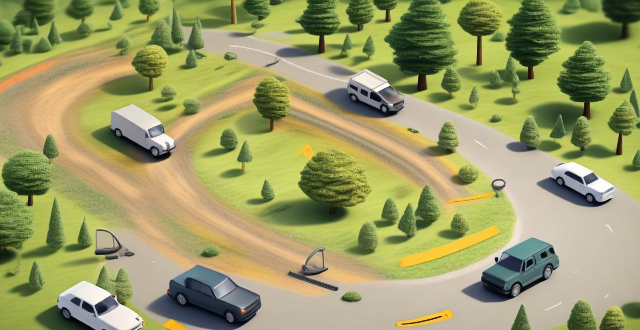
What are the safety precautions I should take during a solo road trip ?
When preparing for a solo road trip, prioritize safety by maintaining your vehicle, packing an emergency kit with essentials like a first aid kit and tools, planning your route using GPS and paper maps, ensuring communication is possible through a charged phone and roadside assistance, staying alert and locking doors for personal safety, checking the weather forecast and having rain gear, taking care of your health by staying hydrated and taking breaks, carrying necessary documentation including driver's license, registration, and insurance, and making copies of important documents. These precautions will help ensure a safer and more enjoyable journey.
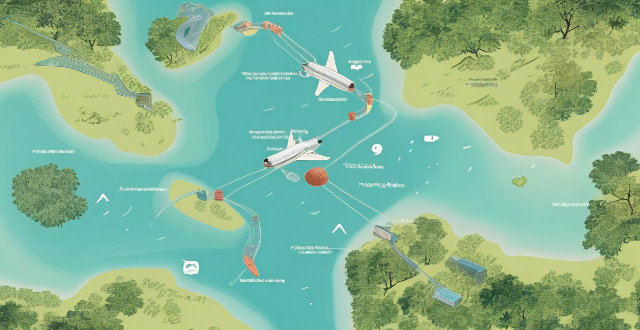
How can I stay connected while on an island vacation ?
To stay connected while on an island vacation, considerTo stay connected while on an island vacation, consider, using Wi-Fi hot setting up a communication schedule with loved ones, utilizing social media, carrying a satellite phone for emergencies, downloading offline maps, and packing smart with multiple power adapters and spare batteries.
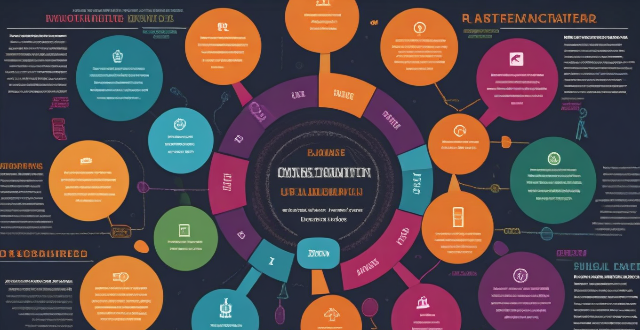
How do I choose the right color scheme for my infographic ?
When designing an infographic, choosing the right color scheme is crucial. Consider the purpose and audience of your infographic to guide your color choices. Understand basic color theory principles to create a harmonious color scheme. Be mindful of the psychological effects of color and cultural associations. Choose a color palette with primary, accent, and background colors. Test and refine your color scheme to ensure it effectively conveys your message and captures your audience's attention.
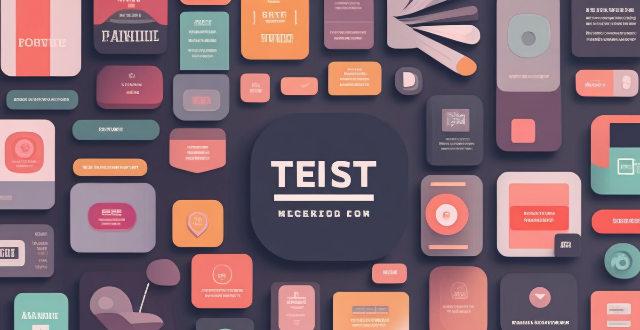
Can you recommend any must-have iPhone apps ?
The text is a list of ten must-have iPhone apps, categorized into different categories. The categories are social media apps, productivity apps, communication apps, entertainment apps, navigation apps, health and fitness apps, photography and video editing apps, finance apps, shopping apps, and utility apps. Each category lists between three and four apps that are essential for the respective category.